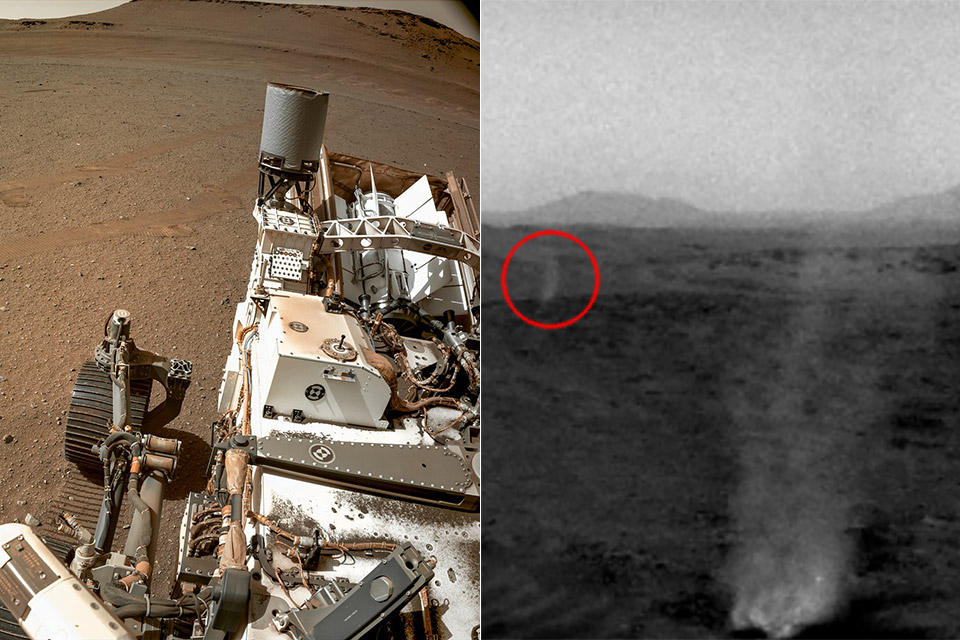NASA’s Perseverance Mars Rover Captures Dust Devils Whirling Across the Martian Surface


NASA’s Perseverance Mars Rover captured an unusual scene at the western rim of Jezero Crater on January 25, in an area known as Witch Hazel Hill. Using its navigation camera, it recorded a video of multiple dust devils whirling across the Martian surface.
Perseverance observed this event from about 0.6 miles away, where the larger dust devil measured around 210 feet wide, and the smaller one around 16 feet. If you look closely, two other dust devils can also be seen in the background at left and center.
Sale

LEGO Technic NASA Mars Rover Perseverance Advanced Building Kit for Kids Ages 10 and Up, NASA Toy with…
- Feed a passion for science and technology – Kids can learn more about the challenges of space exploration with this LEGO Technic NASA Mars Rover…
- Conduct a test flight – This advanced building kit for kids ages 10 and up includes a buildable toy version of NASA’s Ingenuity helicopter, which…
- AR brings the mission to life – The accompanying augmented reality app experience lets kids dive into the details of the rover and its mission
Dust devils are actually a common sight on the Red Planet, first observed by NASA’s Viking mission in the 1970s from orbit, and then later up close by the Pathfinder mission in the 1990s. What causes them? Well, when the sun heats the Martian surface, warm air rises and spin as it interacts with cooler air above, resulting in a dust devil. Fortunately, they’re not a threat to the rover due to Mars’ thin atmosphere, where even strong winds feel more like a breeze.
Convective vortices — aka dust devils — can be rather fiendish. These mini-twisters wander the surface of Mars, picking up dust as they go and lowering the visibility in their immediate area. If two dust devils happen upon each other, they can either obliterate one another or merge, with the stronger one consuming the weaker,” said Mark Lemmon, a Perseverance scientist at the Space Science Institute in Boulder, Colorado.
NASA’s Perseverance Mars Rover Captures Dust Devils Whirling Across the Martian Surface
#NASAs #Perseverance #Mars #Rover #Captures #Dust #Devils #Whirling #Martian #Surface







